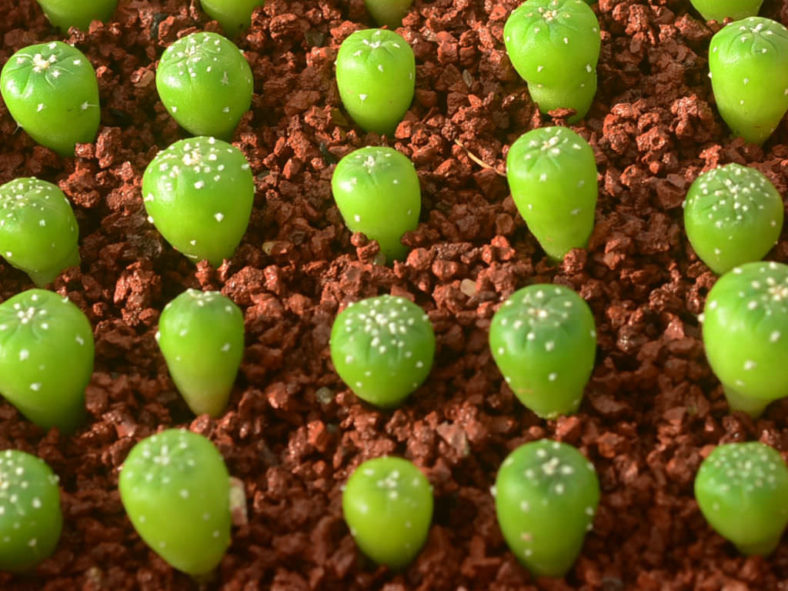Growing cacti from seeds is not as complicated as you might think, even though many of us have tried and failed! One of the most common mistakes people make is planting the seeds too deeply. It would be best to plant seeds deep in the soil as they are wide. When seeds are planted too deeply, the tiny plants emerge and begin to grow, but do not reach the surface before they run out of stored food. Follow these instructions for growing cacti from seeds, and you will surely be successful.
Seeds
When growing most cacti, it is best to use fresh seeds. Seeds can be obtained from a commercial source or collected from a plant in your collection. Take care when collecting seeds from a cactus collection. Some cactus species hybridize freely, and true seeds cannot be assured without carefully monitoring pollination.
Soil
A good potting mix amended with ½ its volume of granite, perlite, or pumice for drainage makes a good mix for growing cacti from seed. The soil must be as pest-free as possible. To pasteurize soil, put it in a shallow heatproof pan and place it in the oven at 300°F (150°C) for 30 minutes. Most commercial soils are at least pasteurized, if not sterilized. Check the label.
Planting
Be sure that all containers to be used are clean. The type of container is not important, but shallow ones are preferred. Water the soil thoroughly and let it drain completely before planting. Spread the seeds evenly over the top of the soil. Cover the seeds lightly with the mix or very fine sand. When planted, cover the container with a transparent lid. This will retain moisture and allow light to reach the seedlings.
Germination
Cactus seeds need both light and warmth to germinate. A sunny window is a good location, but be careful that the light is not too strong and, therefore, too hot. The moisture retained by the cover should be sufficient to germinate the seeds. Most cactus seeds germinate within three weeks, but some take much longer, so be patient. Once the spines are showing, raise the cover for ventilation during the day. Do not allow the soil to dry out. The amount of water will depend on how much light and heat the seedlings receive. Watch the seedlings carefully. Do not swamp them in puddled water, but do not let them dry out completely.

Repotting
Seedlings are ready to transplant into larger containers when they are the size of marbles, between 6 months and a year after germination. Be sure the soil mix is well-drained and the container is no larger than twice the plant's diameter. Plants can be grown in clumps or groups of 6 to 8 per pot at this size until they are about 1 inch (2.5 cm) across, then separated and individually reported. Lift the small plants carefully from the growing mix, place them in the new container, firm the soil around the roots, and water.
It is usually best to let the young plants recover from transplanting in a shaded area. Even in cacti that naturally grow with full sun, seedlings will be tender to the full sun until they are older. Therefore, acclimate the young plant to the sun gradually, beginning when it is about 1 inch (2.5 cm) across. It is often easier to acclimate young plants to the sun in the winter and provide some shade in the summer until they are about 3 inches (7.5 cm) across.
Fertilization
Fertilize young seedlings monthly in the growing season, usually the warm season. Use a formulation specifically for cactus or an all-purpose soluble houseplant formula at ½ the recommended strength.
Source: dbg.org
Links
- Succupedia: Browse succulents by Scientific Name, Common Name, Genus, Family, USDA Hardiness Zone, Origin, or cacti by Genus